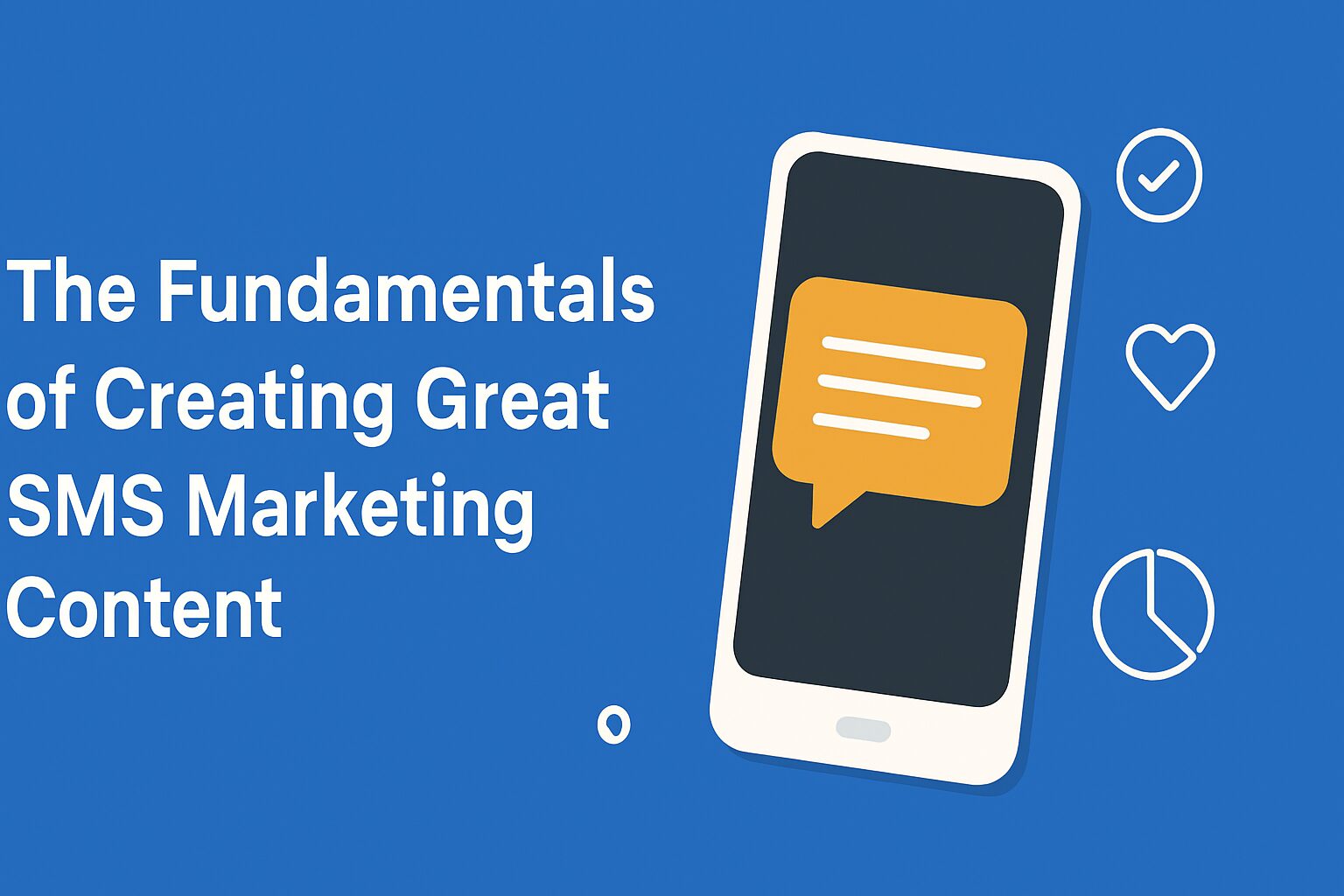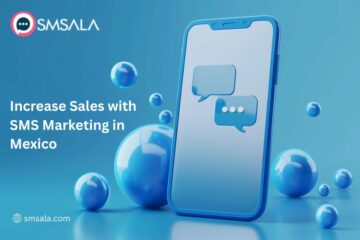Gone are the days when a sounding message notification on a phone was perceived with joy, anticipation of something interesting, and even with pride, when people around you would look at you as a businessman/woman receiving an important notice.
Today, SMS is more often perceived as something trivial and even annoying. However, it still works, and in many ways, better than an email, social media message, or a push notification. It remains one of the most effective direct communication channels for B2C, B2B, and other marketing models.
Want to know how to craft SMS marketing content your customers actually look forward to? Continue reading to discover the proven key elements and steps that make your SMS impossible to ignore.
Why SMS Marketing Still Works in 2025
With the abundance and penetration rate of social media, email, and push notifications, SMS is surprisingly holding its ground as a marketing channel.
Think about the last time you missed a short text appearing right in front of your eyes on your smartphone over other apps. Probably didn’t happen, right? That reliability is why brands hang on to SMS even as shiny new channels pop up every month.
A phone buzz feels personal. It lands in the same inbox as “Running late” from a spouse or “Need anything?” from a friend. Mishandle that trust and you’re done.
Here is why SMS marketing still works in 2025:
- Fast delivery makes time-sensitive offers actually matter.
- Minimal design keeps production quick and cost-effective.
- Users opt in, giving permission from the start.
- Works on both smartphones and old flip-phones alike.
- Short messages leave zero room for corporate jargon.
The secret to SMS efficiency is restraint. One clear point, one clear action, then you are out. No midnight pings or walls of text. Respect earns replies, and replies build customer relationships that are harder to replicate anywhere else.
When it feels like conversation, not spam, SMS turns from a relic to a revenue driver, proof that small screens can still do big things.
Defining Your Campaign Goals
Setting clear goals is an old-faithful success factor for every marketing activity, and an SMS campaign is no exception. Here, two critical elements must be emphasized and explored: target audience research and choosing the right SMS content for marketing based on the business type.
Knowing Your Audience
The target audience in SMS marketing is like a destination for travelling. You wouldn’t board a train without knowing its final stop. So why fire off texts without learning who’s on the other end?
A seasoned traveler also checks the weather before packing. SMS marketers should do the same — forecast audience mood before tapping send.
Begin with what people can’t fake, i.e., behavior. Do they like to shop at dawn? Do they prefer curbside pickup? Those signals tell richer stories than fundamental sociological theories or demographic guesswork ever will.
Always consider and account for context. For instance, holiday seasons shift needs; paydays spark bigger carts. By matching timing to circumstance, your SMS marketing content feels thoughtful, not random.
Here are 10 proven tips from the most effective SMS campaigns to help your content stay relevant:
- Flag weekend shoppers and send Saturday-only flash deals.
- Welcome first-time buyers with a quick “thanks + 10% off.”
- Remind cart abandoners with a gentle “still want this?” nudge.
- Celebrate birthdays by texting a personal one-day coupon.
- Trigger location-based offers when customers walk near your store
- Re-engage lapsed users with a warm “we miss you” bonus.
- Text real-time order tracking to calm delivery worries.
- Give VIP spenders early access to new product drops.
- Thank product reviewers with a code for their next purchase.
- Remind subscribers three days before auto-renewal to cut churn.
Speak with warmth. Thankfully, technology (e.g., Google Analytics 4) allows marketers to create hyper-personalized content for SMS marketing. So, swap “Dear Customer” for the name they entered.
A small personal touch outweighs any graphic you could cram into 160 characters.
Finally, don’t be afraid to make mistakes and treat failures as detours, not dead ends. Every wrong exit still teaches how not to miss the next turn.
With patience, your list transforms from faceless numbers into familiar faces. And a message to a familiar face is rarely ignored.
SMS for Different Business Types
Besides a sharp focus on a relevant audience, SMS marketing also depends heavily on the type of business it serves. A boutique clothing shop and a dental practice both text customers, yet the tone, timing, and calls to action could not be more different.
Think of it like packing for different climates. You wouldn’t bring flip-flops to a ski lodge; likewise, you shouldn’t blast flash-sale language to patients who need a calm appointment reminder.
The first step is matching your message style to your business model and its style — retail’s rush, healthcare’s reassurance, or software’s subscription cadence, or law’s precision.
- Retail: flash deals and restock alerts spur impulse.
- Restaurants: lunchtime offers drive big, fast foot-traffic boosts.
- Appointment clinics: reminders cut no-shows and scheduling gaps.
- SaaS: renewal nudges prevent churn before billing cycles.
- Non-profits: campaign updates keep donors feeling involved.
Take each bullet as a prompt to create engagement, not a fixed rule. Carefully test tone, length, and automate send-time until you find the sweet spot for your crowd. A flower shop’s Mother’s Day countdown might land best at 8 a.m., while an indie game studio’s early-access code may hit harder after dinner.
Don’t forget to take a more detailed look at direct distribution channels to find the delivery option that aligns with your business’s priorities. For example, boutiques rely on CRM integrations and automation, retailers on aggregators, and clinics on short codes.
Finally, respect the rhythm. Send fewer, richer texts instead of daily blasts. Richer, however, doesn’t mean longer. On the contrary, give more weight to each word and emoji.
Tailor links, coupon codes, and reply options, so customers feel you know exactly why they’re on your list — and why they should stay.
Crafting the Perfect SMS Copy
Once the goals and targeting are right, and you know exactly how to approach your destination, it’s time to create your copy. There is one golden rule with SMS writing that you should know upfront: less is more.
People simply don’t like to read long messages. The more succinct and better targeted your SMS, the stronger (more reliably) it can hit your target.
Using Personalization Effectively
As mentioned earlier, instead of a generic “Dear customer”, your SMS can and should mention the recipient’s name. Even if it’s a cold outreach, modern technologies like Outgrow allow collecting quality input from potential customers and capturing their vital personal information.
So swap that stiff “Dear Customer” for their actual first name and watch engagement jump. A name feels like a wave across the room; it tells the reader, “Hey, this is for you.” The trick is to use it naturally, not like a form letter that just plugs in a placeholder.
Personalization runs deeper than salutations. Reference the last item they browsed, or remind them of loyalty points that are about to expire. These details prove you’re paying attention, and they turn a routine text into a helpful nudge.
Keep the tone warm but clear. For instance, “Hi Julia, your refill is ready at Maple Pharmacy,” says more than a generic pickup notice ever could. It solves a problem (no guessing, no extra clicks for your client) and shows respect for her time.
Timing matters, too. Send that refill reminder at breakfast, not midnight. Likewise, a lunchtime coupon for the sandwich shop down the street feels considerate, almost friendly.
Remember that good personalization marries SMS content for digital marketing to context.
Finally, respect the opt-out. People who trust you with their data deserve an easy exit. When they stay, they’ll know your texts show up only when relevant, and that’s how real relationships grow.
Call-to-Action That Converts
Call-to-action (CTA) has become one of the most overused elements in marketing communications. Not surprisingly, many people now shrug and scroll past anything that even looks like a CTA. They’ve seen “Click here!” a thousand times; the words feel hollow unless we prove otherwise.
To cut through that cynicism, your call-to-action needs to act less like a pushy salesperson and more like a helpful friend. We understand that it’s difficult to do in such a closed space as an SMS. But you can try doing small baby steps, making your messages clearer and less intrusive.
Give the reader a concrete payoff and a clear path, then step aside. If it reads naturally in conversation, you’re on the right track.
Here are some concrete clues on how to make your CTAs more efficient:
- Lead with a verb that promises something useful today.
- Explain the benefit before asking for their precious tap.
- Keep links short, memorable, and obviously trustworthy.
- Pair urgency with reason — “sale ends Sunday” beats vague hurry.
- Offer an easy out, so commitment never feels forced.
Once you’ve drafted the line, test it on yourself or your colleagues. Would they tap if they weren’t on the payroll? If you hesitate, tighten the phrasing or sweeten the reward.
Remember, every extra word dilutes focus. One crisp instruction plus one clear benefit almost always outperforms a flowery paragraph. Respect the reader’s time, and their thumb will follow.
And don’t forget: your CTA should point to a mobile-friendly page built for that outreach for more site visits. Capturing leads without an effective landing page wastes time and resources.
Using Emojis and Links Wisely
Speaking of overused elements in marketing communications, emojis and links have their “deserved” place in this category. Indeed, these little bursts of color and convenience have earned their reputation for overuse. Yet when chosen with care, they transform a hunk of text into something that feels alive and clickable.
Start by matching emoji style to your brand’s personality. A bank texting in a loan reminder might raise eyebrows, and a taco truck sending at lunch hour naturally fits. With SMS and emotions, context is everything.
Links carry similar baggage. These days, people worry about spam and phishing, so transparency matters. What can you do? First and foremost, shorten for length, but never mask where they lead.
Additionally, consider the following tips:
- Use one emoji to highlight, not decorate, your main point.
- Place the link immediately after its supporting sentence.
- Spell out critical words in the URL for quick reassurance.
- Skip emojis if the moment is serious or time-sensitive.
- Review performance metrics monthly and adjust your mix.
Adding emojis and non-intrusive links is an art, where the goal is frictionless reading. Emojis should spark quick feelings; links should deliver promised value without detours. Anything else is noise, really.
Remember, inbox trust is fragile. Treat every icon and hyperlink like a handshake — you only get so many before the other party walks away.
The Final Word
It’s unlikely that SMS will cease to exist as a marketing communication channel in the near future, nor will it lose its efficiency, as people will continue to use their phones. The power of SMS marketing content is in its laconic form and timely appearance.
Keep in mind, though, that oftentimes you only have 1 second to capture a user’s attention — that’s how short the attention span of an active social media user is today.
Phones may evolve, but that familiar buzz still cuts through the chaos. What matters now is how you use it: one clear promise, one easy action, delivered at the right moment. Do that, and SMS remains your most direct line to a customer’s busy day.
Remember, attention is rented, not owned. You’ve got a heartbeat to prove the message matters — make every character pull its weight and send readers back into their lives a little happier than before.



